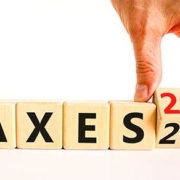WHICH IS BETTER – KEOGH OR SEP?
Retirement plans available to a self-employed individual vary from the very fundamental to the complex variety; with the latter requiring the services of professional pension plan administrators. Among the plans available are the Keogh, SEP, and Defined Benefit and Simple IRA plans. Because of their complexity and normally high administration costs, the Defined Benefit and Simple IRA plans are not discussed in this article. However, older individuals should take note of the larger retirement contributions available with Defined Benefit plans that could justify the higher administration costs.
Keogh Plans: The overall annual contribution limit to a Keogh plan is 25% of the net profits less the retirement contribution made to the plan itself. After doing the appropriate math, we find 25% of the net profits less the retirement contribution actually equates to 20% of the net profit. The total contribution for the year is also limited to the annual contribution limit. For 2017, that limit is $54,000 (up from $53,000 in 2016) and the maximum compensation upon which the contribution is based is limited to $270,000 (up from $265,000 in 2016.
Self-Employed Individual Keogh Limit – The contribution limit is 25% of the net profits from self-employment less the amount of the contribution itself and the self-employment (SE) tax deduction. This will result in a contribution amount somewhat less than 20% of the net profits before deducting the contribution itself and the SE tax deduction. The contribution is also limited to the same maximum contribution amount and compensation limits as applicable to an employee.
Keogh plans must be established before the end of the year for which a contribution is made. However, the contribution for any year can be delayed until later, but not later than the due date of the taxpayer’s individual return including extension. Reporting requirements for one-participant Keogh plans require that Form(s) 5500-EZ be filed for the year the assets of all related plans exceed $250,000 and in the final year of the plan. All other plans must file Form(s) 5500 annually. For calendar year taxpayers, the due date for this report is July 31.
SEP Plans: Unlike the Keogh plan, a SEP plan can be established after the close of the tax year. However, it must be established and funded by the due date of the taxpayer’s return plus extensions. SEP plans are also referred to as SEP IRAs since they utilize IRA accounts as the depository for the plan contribution. Even though the funds are being deposited into an IRA account, the SEP contribution has the same contribution limits as the Keogh plan. An additional advantage of a SEP plan is that there are no annual reporting requirements like those that apply to the Keogh plans.
Employees: If a self-employed individual has employees, it may be necessary to include the employees in the plan. Most plans require coverage once an employee attains age 21. With a Keogh plan, you don’t have to cover employees until they have completed at least one year of service (two years in some cases). A SEP is a little different, since you only need to cover employees who have worked for you during three of the past five years. Once this test is met, most part-time workers will have to be covered under a SEP.







Leave a Reply
Want to join the discussion?Feel free to contribute!